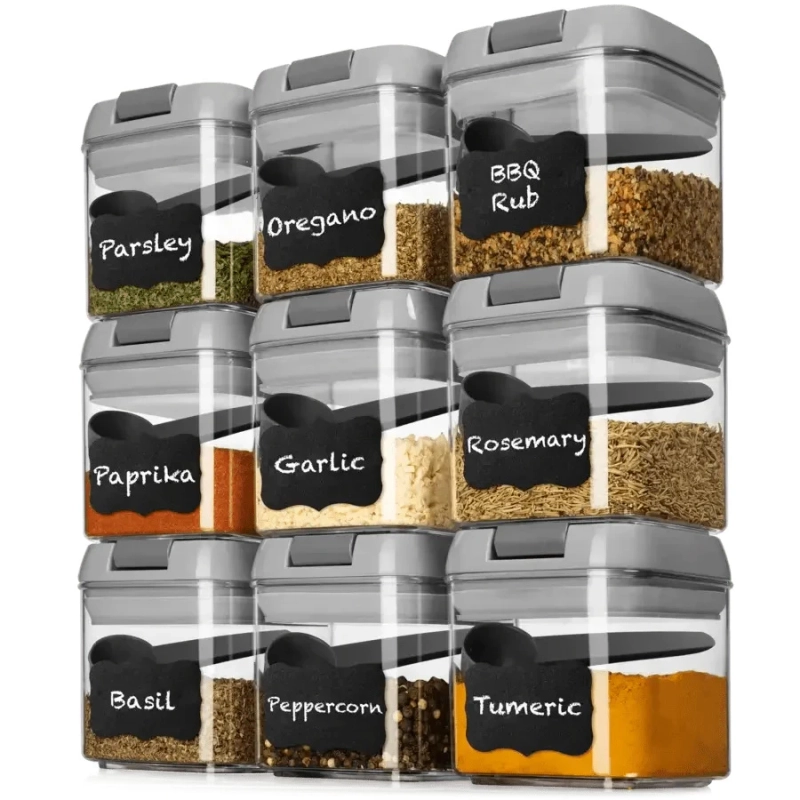Introduction to Meal Prep Containers
Meal prep is all the rage these days, right? But if you're diving into it, you’ve got to get your container game on point. The size of your containers can make or break your meal prep routine. Too big, and you’ve got wasted space and food sliding around. Too small, and you’ll be struggling to fit your meals in. So, which sizes are best for meal prep containers? Let’s dig in and find out.
The Importance of Choosing the Right Size
Picking the right container size isn’t just about aesthetics. It’s about practicality, efficiency, and keeping your food fresh and tasty. The right size ensures your portions are controlled, your fridge isn’t overstuffed, and your meals stay appetizing. It's like Goldilocks looking for that "just right" bowl of porridge.
Common Container Sizes for Meal Prep
Small Containers (1-2 cups)
Best Uses for Small Containers
Small containers are your go-to for snacks and sides. Think of them as your secret weapon for portion control. Need a quick snack? Boom, there’s your hummus and carrot sticks.
Ideal Foods for Small Containers
These are perfect for items like nuts, dips, fruit portions, and small salads. Small containers keep everything fresh without the air pockets that lead to spoilage.
Medium Containers (3-4 cups)
Best Uses for Medium Containers
Medium containers are the MVPs for single meals. They’re versatile enough for salads, grain bowls, and even that leftover pasta from last night.
Ideal Foods for Medium Containers
Use these for balanced meals that include a protein, a carb, and some veggies. They’re great for lunch or dinner portions, fitting a hearty yet controlled amount of food.
Large Containers (5-6 cups)
Best Uses for Large Containers
When you’re planning meals for the whole family or prepping bulk items, large containers step in. They’re awesome for batch cooking and storing larger portions.
Ideal Foods for Large Containers
These are ideal for family-sized portions of stews, casseroles, or big batches of grains and roasted veggies. Perfect for those nights when you want something ready to go.
Extra-Large Containers (7+ cups)
Best Uses for Extra-Large Containers
Extra-large containers are for the big leagues. If you’re prepping for a week’s worth of meals or storing big items like whole roasts, these are your best bet.
Ideal Foods for Extra-Large Containers
Think bulk prep of proteins, large salads for multiple meals, or even soups and chilis that feed the family all week long. They keep everything organized and fresh.
Factors to Consider When Choosing Container Sizes
Portion Control
The size of your container directly affects how much food you’re likely to eat. Smaller containers help keep portions in check, which is crucial for anyone watching their calorie intake.
Storage Space
Consider the size of your fridge and freezer. Stackable containers in a variety of sizes can maximize your storage space and keep everything neat and tidy.
Meal Variety and Flexibility
Having a range of container sizes allows you to mix and match different meals. It’s easier to avoid meal fatigue when you’ve got variety in your fridge.
Materials and Their Impact on Container Size
Plastic Containers
Plastic containers are lightweight and versatile. They come in all sizes and are usually more budget-friendly. However, be mindful of their longevity and potential for staining.
Glass Containers
Glass containers are heavier but better for reheating and longevity. They often come with sturdy lids and don’t absorb odors or stains. They’re an investment in durability and quality.
Stainless Steel Containers
Stainless steel containers are durable and often more eco-friendly. They’re great for those who prefer a plastic-free option, though they might be pricier and less see-through.
Tips for Effective Meal Prep Using Different Container Sizes
Mixing and Matching Sizes
Don’t just stick to one size. Mixing small, medium, and large containers can help keep your meals balanced and your fridge organized.
Labeling and Organization
Label your containers with dates and contents. This not only helps you keep track of what needs to be eaten first but also avoids the dreaded "mystery meal" syndrome.
Storing and Reheating Considerations
Think about how you’ll reheat your meals. Glass is great for microwaving, while stainless steel might be better for stovetop reheating. Plan accordingly to save time and hassle.
Conclusion
Choosing the right container sizes for meal prep can seem like a minor detail, but it’s a game-changer. It’s all about finding that sweet spot where your portions are perfect, your food stays fresh, and your fridge looks Instagram-ready. Mix up your container sizes to suit your needs, label everything for easy access, and watch how much smoother your meal prep game becomes. Happy prepping!
FAQs
What is the best container size for salads?
Medium to large containers (3-6 cups) work best for salads to keep ingredients fresh and prevent squishing.
Can I use the same size containers for snacks and meals?
While you can, it’s more efficient to use small containers for snacks and medium to large ones for meals to save space and maintain portion control.
Are glass containers better than plastic for meal prep?
Glass containers are often preferred for their durability and safety in microwaves, but plastic containers are lighter and less likely to break.
How do I avoid freezer burn in my meal prep containers?
Ensure containers are airtight and leave a bit of space at the top for expansion if freezing liquids. Labeling with dates can help you rotate your meals effectively.
What are the benefits of using stainless steel containers?
Stainless steel containers are durable, eco-friendly, and don’t retain odors or stains, making them a great choice for long-term meal prep.


